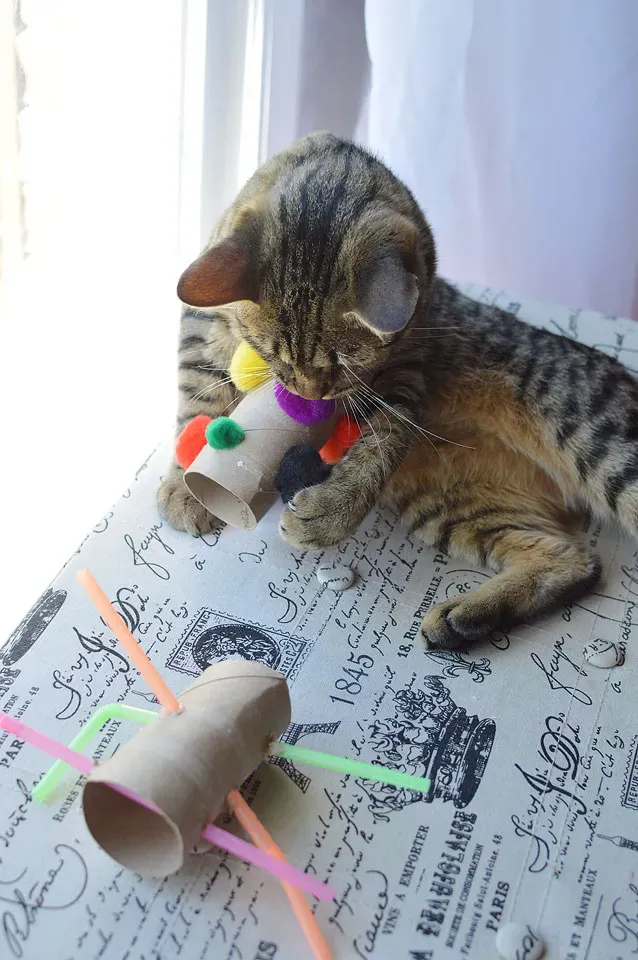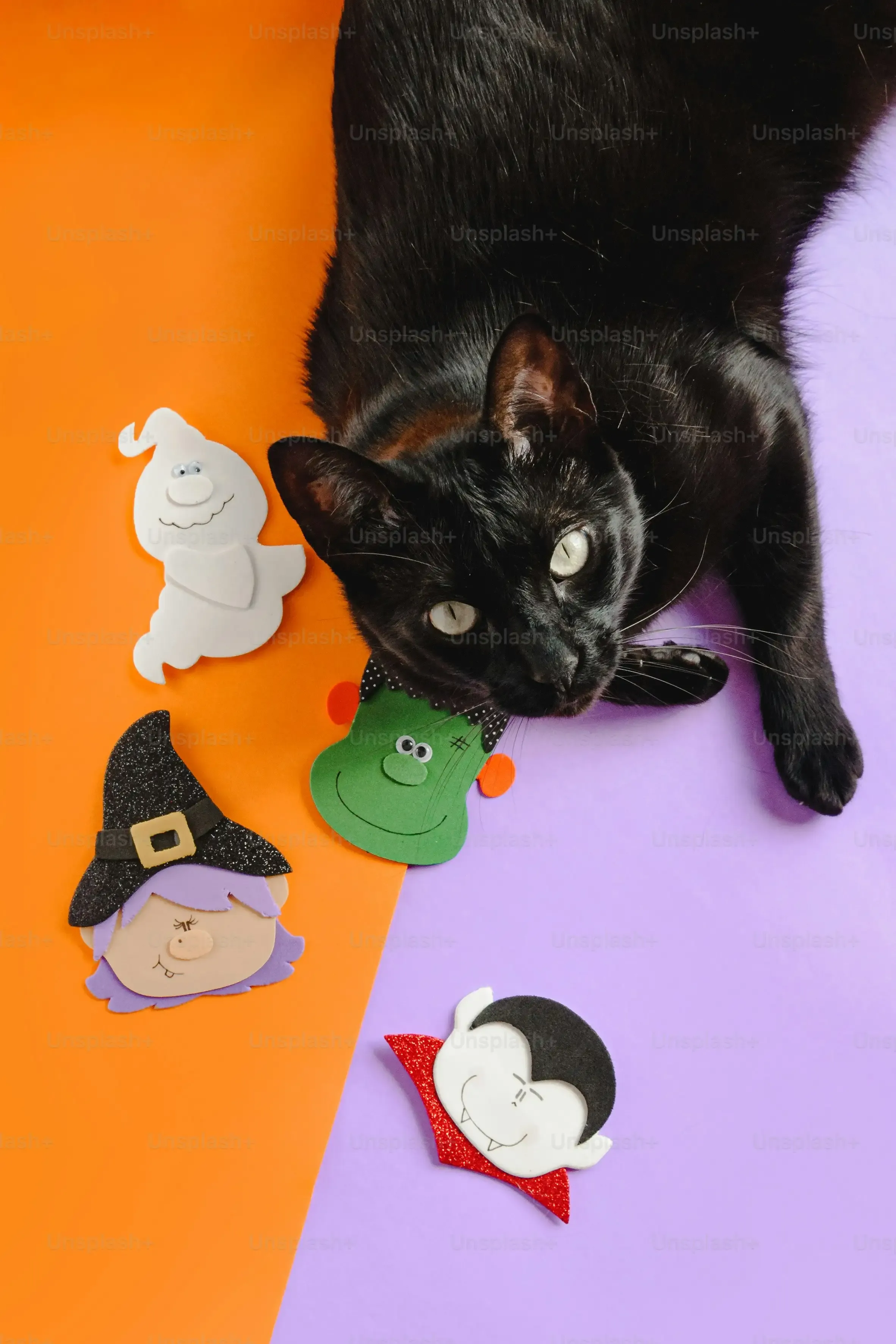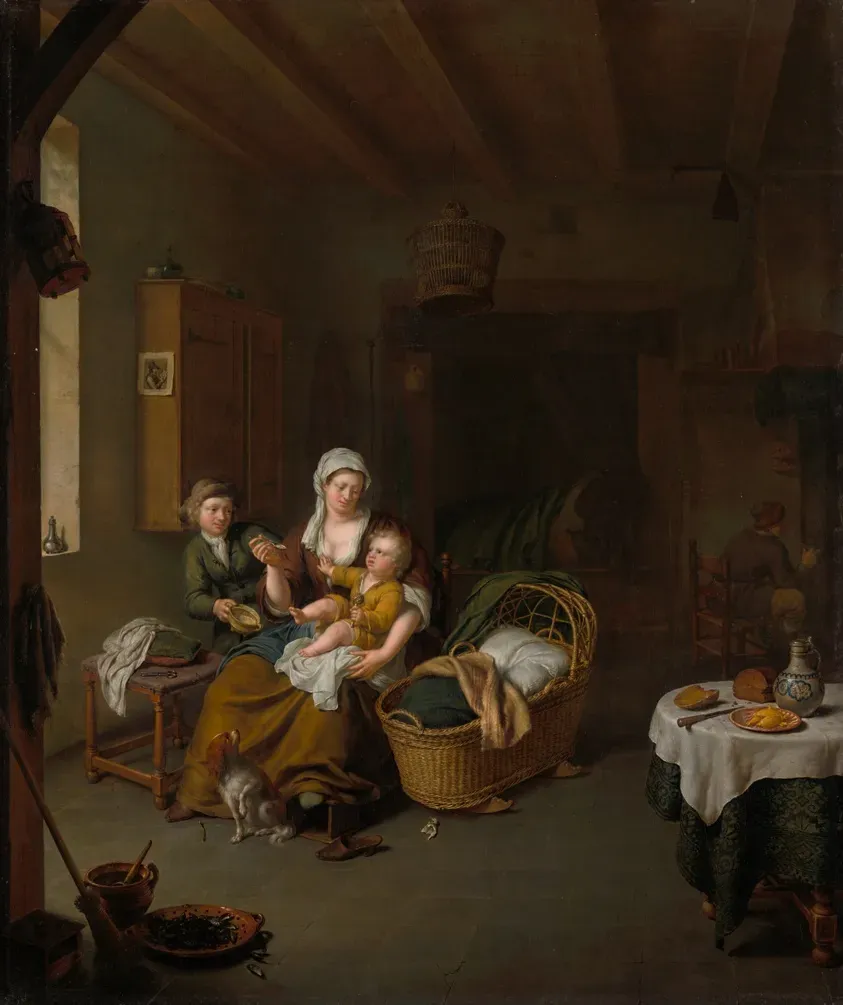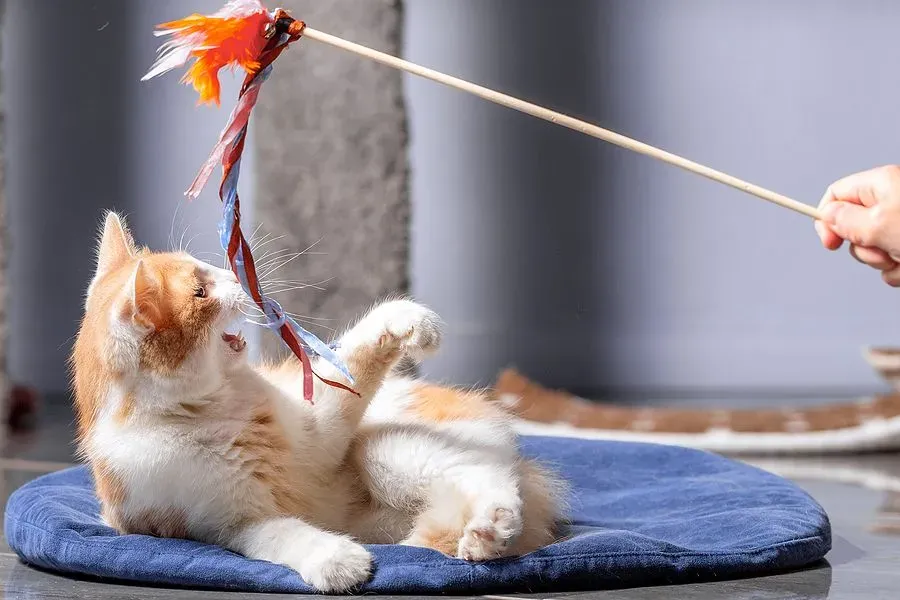Table of Contents
Let's be honest. You spent good money on that fancy cat tree, the interactive puzzle feeder, and enough squeaky mice to stock a pet store. Your cat, meanwhile, seems more interested in the cardboard box the tree came in, or perhaps that rogue bottle cap under the fridge. Sound familiar? Cats get bored. Fast. And while their indifference can feel like a personal affront, it doesn't mean you need to keep throwing cash at the problem.
Why Your Cat Needs Play (and Why Homemade is Smart)

Why Your Cat Needs Play (and Why Homemade is Smart)
Instincts Don't Just Disappear
Look at your cat snoozing on the couch, a picture of domestic bliss. It's easy to forget that under all that fluff lies a finely tuned predator. Their ancestors hunted small prey, stalked through tall grass, and relied on quick bursts of energy and strategic pounces to survive. Your modern housecat still carries those hardwired instincts. Without an outlet, that pent-up energy and predatory drive can manifest in less desirable ways – like attacking your ankles at 3 AM or turning your favorite rug into a scratching post.
Play is their way of practicing those crucial survival skills. It's not just cute batting at a string; it's simulating the hunt. They stalk, they chase, they pounce, they 'kill' their toy. Depriving them of this essential activity isn't just unkind; it can lead to boredom, frustration, and even anxiety. A well-played cat is generally a happier, calmer cat, less likely to invent their own, potentially destructive, games.
More Than Just Exercise
Beyond burning calories, playtime is vital for a cat's mental well-being. It provides mental stimulation, keeps their minds sharp, and prevents the lethargy that can set in when life is too predictable. Think of it as their daily crossword puzzle or gym session combined. Interactive play, where you're involved, also strengthens the bond between you and your feline companion. It builds trust and reinforces that you are a source of positive interaction, not just the provider of food.
Different types of play engage different instincts. Toys that mimic prey encourage stalking and pouncing. Puzzle toys challenge their problem-solving skills. Toys they can bat around fulfill their need for batting and chasing. A varied play routine addresses their complex needs and keeps them engaged, preventing that glazed-over "seen it all before" look cats are so good at perfecting.
- Play mimics hunting behavior, satisfying natural instincts.
- It provides crucial physical exercise, preventing obesity.
- Mental stimulation keeps their minds sharp and prevents boredom.
- Interactive play strengthens the human-cat bond.
- It can reduce stress, anxiety, and unwanted behaviors.
Why Homemade Makes Sense for the Best Play
Now, about those store-bought toys. Some are great, sure. But many are overpriced, quickly destroyed, or simply ignored after the initial novelty wears off. This is precisely why exploring the **best homemade cat toys** is a genuinely smart move. You control the materials, ensuring they are safe and non-toxic (no questionable dyes or tiny plastic bits waiting to be swallowed).
Homemade toys allow for endless customization. Does your cat love crinkly sounds? Stuff some plastic bags (safely enclosed) into a fabric tube. Are they obsessed with feathers? Tie some securely to a stick. You can experiment with different textures, sounds, and movements to discover what truly captivates your specific cat. Plus, let's be real, there's a certain satisfaction in watching your cat go absolutely bonkers over something you whipped up in five minutes from junk drawer materials. It's cost-effective, creative, and often results in toys far more engaging than anything you'd buy off a shelf. Why Your Cat Needs Play (and Why Homemade is Smart) boils down to providing instinctual outlets safely and affordably.
The Best Homemade Cat Toys You Can Make in Minutes

The Best Homemade Cat Toys You Can Make in Minutes
Alright, let's dive into the quick wins. You don't need a sewing machine or a craft room full of supplies to whip up some of the **best homemade cat toys** your furball will actually chase. We're talking about raiding your recycling bin, digging through your linen closet, or simply looking at everyday objects with a cat's discerning eye. The beauty here is speed and simplicity. Think five minutes, maybe ten if you're feeling fancy, and you've got a new source of entertainment that didn't cost you a dime and likely uses materials your cat is already fascinated by. These aren't meant to be heirlooms; they're meant to be batted, chased, and maybe eventually shredded, fulfilling that glorious cycle of feline destruction and satisfaction.
Getting Creative: Slightly More Involved Best Homemade Cat Toys

Getting Creative: Slightly More Involved Best Homemade Cat Toys
so we've covered the "raid the junk drawer, five minutes max" category of the **best homemade cat toys**. Now, let's talk about stepping it up just a notch. We're not talking about building a miniature trebuchet to launch catnip mice (though, don't tempt me), but rather projects that might require a needle and thread, some basic cutting, or perhaps a trip to the hardware store for a single, specific item. These are the toys that might last a bit longer, offer a different kind of stimulation, or just feel a little more substantial than a crumpled paper ball. Think of it as moving from instant coffee to brewing a proper pot – still easy, but with a bit more depth and potential for satisfaction (for both you and the cat, hopefully).
Household Hacks for the Best Homemade Cat Toys

Household Hacks for the Best Homemade Cat Toys
Your House is a Toy Chest
so you're sitting there, looking around your living room, and thinking, "What does this have to do with the **best homemade cat toys**?" More than you think! Cats are naturally curious and easily entertained by things we consider mundane. That empty paper towel roll? Cat tunnel. The ring from a milk jug? Instant batting practice. An old sock tied in a knot? Prime wrestling buddy. My cat, Mittens, once spent twenty minutes batting a single dried bean across the floor. It was mesmerisingly low-tech.
The trick is to see these items from a cat's perspective. Is it lightweight? Does it make an interesting sound when moved? Can it be chased, pounced on, or carried? Don't overthink it. Some of the most effective toys are the simplest things you'd otherwise throw away. Just make sure whatever you offer is clean and doesn't have small parts that could break off and be swallowed.
Getting Clever with Common Items
Beyond the super-obvious, you can get a little more inventive with your household detritus to craft some of the **best homemade cat toys**. Got some leftover fabric scraps? Tie them onto a stick for a quick wand toy. An old t-shirt can become a braided pull toy. Ever notice how cats love hiding in bags? Cut the handles off a sturdy paper bag and lay it on its side – instant fort. Just avoid plastic bags unsupervised due to the suffocation risk. Even a crumpled piece of aluminum foil provides a crinkly, unpredictable target for batting paws.
Think about texture and sound. Crinkly paper, rough fabric, smooth plastic rings – variety keeps things interesting. Remember that thing about Mittens and the bean? It's the unexpected movement and sound that often triggers their prey drive. These hacks are about tapping into that innate curiosity and hunting instinct using materials already within reach.
- Empty paper towel/toilet paper rolls (great for batting or hiding treats)
- Milk jug rings (perfect for sliding and chasing)
- Old socks (tie knots for a chew/wrestle toy)
- Fabric scraps (tie onto sticks for wands or braid into tug toys)
- Sturdy paper bags (handles removed, laid on side for a hideout)
- Crumpled aluminum foil (for crinkly sound and unpredictable movement)
Keeping it Safe: Essential Tips for Homemade Cat Toys

Keeping it Safe: Essential Tips for Homemade Cat Toys
so you're armed with cardboard tubes, old socks, and a new sense of purpose. You're ready to craft the **best homemade cat toys** your furball has ever seen. But before you unleash your creations, let's pump the brakes for a second and talk safety. It's easy to get caught up in the creative process, but a swallowed button or a tangled string can turn playtime into a veterinary emergency. Cats are remarkably good at dismantling things and finding the one tiny piece you thought was secure. Assume they will try to eat it, choke on it, or get tangled in it. This isn't pessimism; it's just knowing cats. So, a few basic precautions stand between a fun afternoon and a stressful trip to the vet.
- Avoid small parts like buttons, beads, or googly eyes that can be chewed off and swallowed.
- Steer clear of long, thin strings, yarn, or ribbon. These can cause serious internal damage if ingested. Keep string toys for supervised play only.
- Ensure materials are non-toxic. Check labels on fabrics, paints, and adhesives. Natural materials are often best.
- Remove any sharp edges or points from cardboard or plastic items.
- Regularly inspect homemade toys for wear and tear, discarding them if they start falling apart.
- Be mindful of potential choking hazards based on your cat's size and chewing habits.
More Than Just String and Cardboard
So there you have it. A few simple supplies, a bit of creativity, and you've bypassed the pet store aisle entirely. Making the best homemade cat toys isn't some grand gesture; it's a practical way to keep your cat stimulated, active, and maybe even slightly less prone to attacking your ankles at 3 AM. You're not just saving a few bucks; you're potentially saving your furniture and your sanity. Whether it's a simple toilet paper roll or a slightly more complex fabric creation, the goal is engagement. Your cat probably won't give you a trophy, but a solid fifteen minutes of enthusiastic play is a pretty good reward in itself. Just keep an eye on wear and tear, swap things out to keep interest high, and accept that sometimes, yes, they'll still prefer the box.